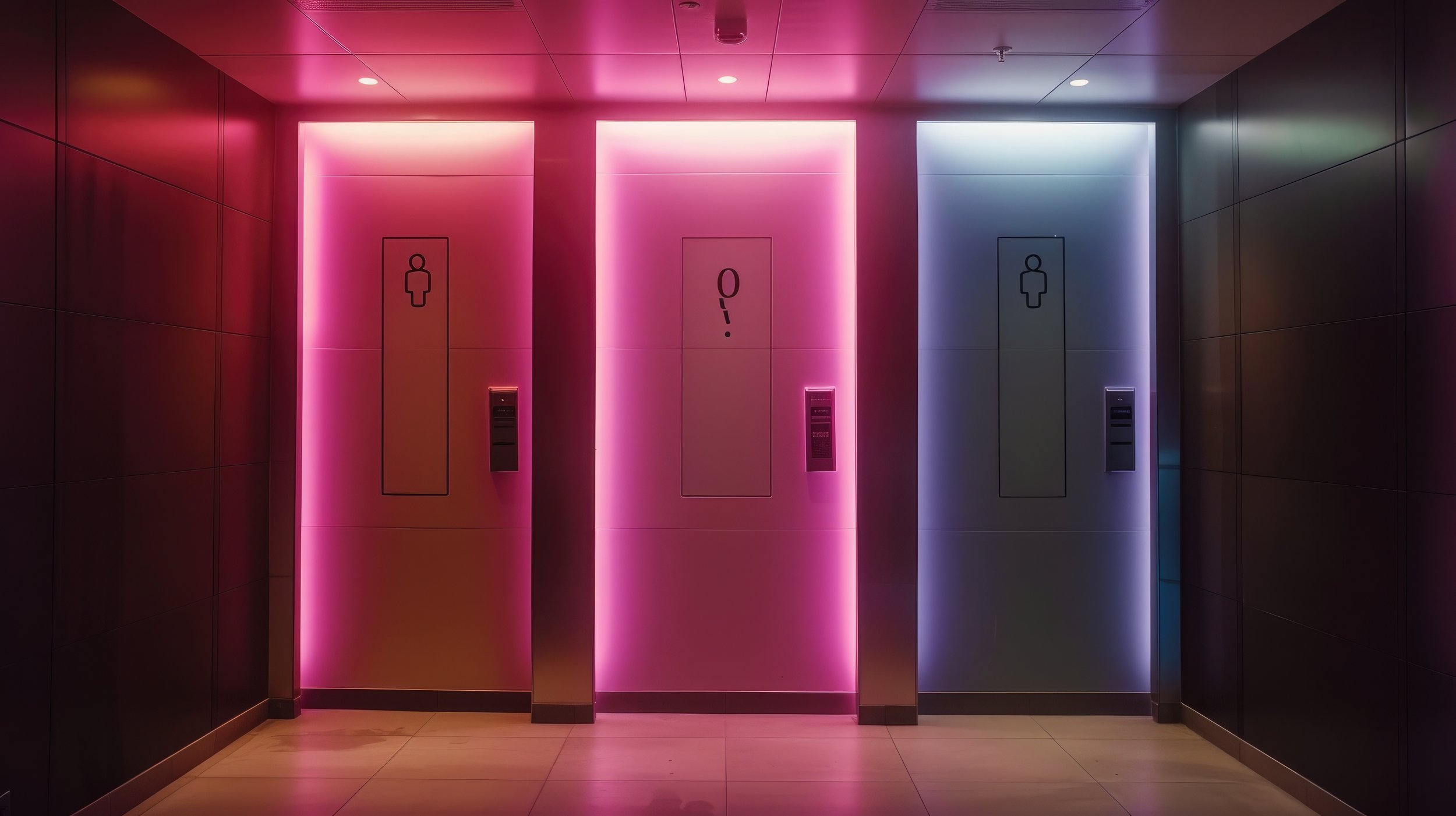Navigating Success
The Critical Role of Wayfinding in Commercial Design
In the bustling corridors of commercial spaces, and the sprawling shopping malls, vast office buildings, or intricate airport terminals—the design element that often goes unnoticed but is crucial to functionality and user experience is wayfinding. Effective wayfinding systems do more than just guide visitors through a physical space; they enhance the environment, reduce stress, and can even influence consumer behavior. Here’s why wayfinding is an indispensable part of commercial design.
Enhancing User Experience
Imagine entering a large, unfamiliar building and finding your destination effortlessly, guided by clear, intuitive signage and strategic design cues. This seamless experience is no accident but the result of well-planned wayfinding. Good wayfinding systems help people orient themselves and navigate from place to place within complex environments easily. This is not just a convenience but a necessity, particularly in high-stress environments like hospitals or airports, where getting lost can escalate anxiety significantly.
Boosting Efficiency and Flow
In commercial settings, the flow of foot traffic is critical to operational efficiency. Effective wayfinding contributes to a smooth flow of movement, preventing bottlenecks and confusion that can result from poor spatial planning. In retail environments, wayfinding can guide customers on a journey through the store, subtly enhancing sales by ensuring high-interest products are easy to find and prominently displayed.
Strengthening Brand Identity
Wayfinding extends beyond functional signage—it’s an opportunity to reinforce brand identity. The design, color, typography, and even the language of wayfinding elements can reflect a brand’s personality, contributing to a cohesive aesthetic experience. For instance, a luxury boutique might use elegant, minimalist signage that corresponds with its brand image, while a children’s hospital might opt for bright, cheerful signs that appear more welcoming and less intimidating to young patients.
Ensuring Accessibility
Accessibility is a crucial aspect of commercial design, and effective wayfinding must cater to all users, including those with disabilities. This includes tactile signs for the visually impaired, audible signals for the hearing impaired, and easily accessible information points. Ensuring that wayfinding systems are inclusive not only complies with legal requirements but also signals to customers that a business is considerate and welcoming to everyone.
Reducing Operational Costs
Efficient wayfinding can also reduce the need for staff to give directions and assist lost visitors, thereby lowering operational costs. In large complexes, such as hospitals or universities, staff spend considerable time directing traffic; well-designed wayfinding frees them up to focus on their primary roles, enhancing overall productivity.
Case Study: Airport Wayfinding
Consider the example of a major international airport, which implemented a new wayfinding system. By using consistent, clear signage, logical pathways, and multilingual options, the airport was able to improve passenger satisfaction significantly. Feedback showed reduced missed flights and enhanced airport efficiency, showcasing how essential wayfinding is to commercial success.
Conclusion
Wayfinding is much more than an element of commercial design—it’s a critical component that impacts functionality, efficiency, branding, and user experience. By investing in effective wayfinding, businesses can ensure that their spaces are not just places people visit but environments where they feel guided, comfortable, and valued. As commercial spaces continue to evolve, the importance of strategic wayfinding design remains paramount, making it a key consideration for any commercial designer aiming for success.


